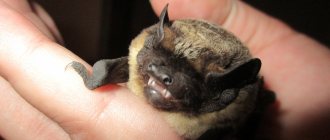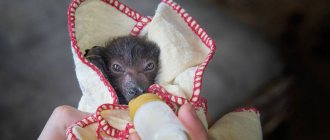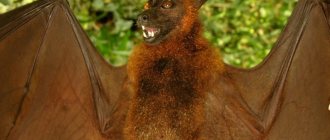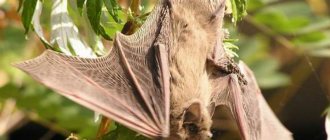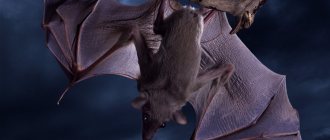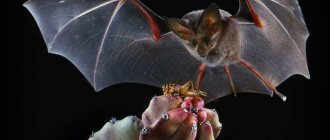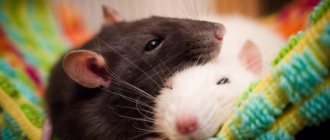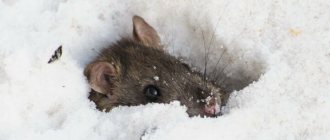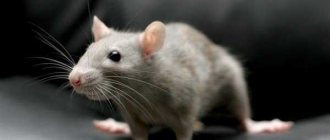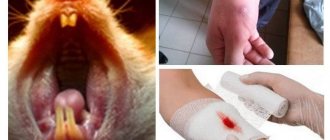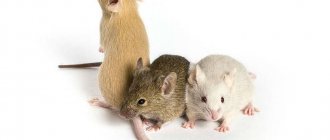Mice are one of the most numerous orders of mammals. Science knows more than seven hundred species of rodents belonging to the mouse genus. The animals have spread throughout the world due to their high ability to adapt to environmental conditions. High fertility and unpretentiousness to food help them survive. Therefore, it is definitely impossible to answer the question of where mice live, since they can be found almost everywhere.
Description of the rodent
— Advertising —
The body length of the house mouse is 6.5-9.5 cm. The length of the tail is about 60% in relation to the length of the body, its surface is covered with horny scales, which are arranged in rings, as well as short sparse hairs. The weight of adult individuals is from 12 to 30 g. The ears are round and small. The fur is dark or brownish-gray, the belly is ash-gray or white. Desert mice are lighter in color, their fur is yellowish-sandy, and their bellies are white. Domesticated mice come in white, black, yellow, blue-gray and variegated colors. Females have 5 pairs of nipples.
Appearance tricks
In nature, nothing happens just like that. The appearance of mice is dictated by their habitat. The mouse looks inconspicuous, gray, and usual. This is what allows the cautious little creature to remain unnoticed in the dark. After all, it is with the onset of night that the rodent becomes active.
On a note!
Depending on the habitat - swamp, field, rocky area, forest - the color changes.
The body of the mouse is covered with short, thick fur of gray, black, brown, and red color. The length of the tail varies among different mouse representatives. Basically 1/3 of the body length. This mouse structure applies to most species of this family.
The mouse's appearance is distinguished by its round, relatively large ears and expressive eyes. The muzzle can be blunt or sharp. Small paws allow mice to develop high speed. It is impossible to keep up with the animal without skills. Constant mobility protects the animal from freezing in winter and overheating in summer. The body length can reach 10 cm, excluding the tail, weight is about 50 g. In the photo you can clearly see a cute, small creature.
Nutritional features of the house mouse
Under natural conditions, house mice feed mainly on the seeds of wild and cultivated plants. They prefer seeds of cereals, legumes and asteraceae. In addition, they feed on insects, their larvae, and carrion. Green parts of plants make up up to 1/3 of the total feed volume. When there is enough food, reserves are made.
— Advertising —
House mice consume about 3 ml of water per day and are very sensitive to dehydration.
Living next to humans, mice eat all available food, sometimes even soap, candles, and glue. Your diet includes grain, rice, oats, meat, chocolate, and dairy products.
House bat
When they want something exotic, people get a bat. These animals can get used to home conditions, but will feel uncomfortable. If you decide to get this animal, it is important to provide suitable conditions.
The bat is nocturnal. During the day, the little animal prefers to sleep.
Pet house
A large space is important for a bat, so you need to take care of a large enclosure. It is decorated with branches so that the animal has somewhere to hide during the daytime. For bats, environmental temperature is important. The norm is 30 degrees.
A birdcage may not be suitable, since a chiropteran animal can easily get between the twigs.
Distribution of the house mouse
The homeland of the house mouse is northern India or northern Africa or Western Asia; in all these regions the species is known in fossil form. Later, together with people, the house mouse spread throughout the world and today it is a cosmopolitan animal.
House mice do not live only in the Far North, Antarctica and in the mountains at high altitudes. Their prevalence is somewhat limited by low air temperature and high humidity. In Russia, house mice do not live in the northeast of Siberia, on the Taimyr Peninsula, near the Yenisei and Lena, in the mountain tundra.
The number of house mice varies with the seasons; at the end of winter it is smallest, and with the beginning of spring and the breeding season, the number of individuals grows and reaches its maximum in autumn.
Rodents on human territory
The habitat of mice is not limited to nature. With the onset of cold weather, they prefer to settle in human possessions. House, apartment, warehouses, barns, outbuildings, sheds, garages. There is not a single structure that has not been visited by mice.
When visiting, mice settle under the floor, in the gaps between walls, on the ceiling, attics, and basements. They gnaw a hole or build a nest from available materials. They carry sticks, feathers, fabric, hair, polystyrene foam, and building materials that are used to insulate walls.
Mice in the house
They prefer to settle in close proximity to a place with food supplies. Mice live in the kitchen, pantry, and barns. They try not to show themselves to people. But when there are a large number of rodents in the house, when there is a struggle for survival, they gain impudence and crawl out of the shelter during the day.
Common types of house mouse
Approximately 130 subspecies of the house mouse have been described, which are grouped into main subspecies according to their habitat regions:
- Mus musculus musculus is a resident of Eastern Europe, from Poland and further east, most of Russia.
- Mus musculus domesticus - habitat includes Europe, America, Australia, Africa.
- Mus musculus bactrianus - found in Asia, except the southeastern region.
- Mus musculus castaneus - distributed in southeast Asia.
Interestingly, in the times of Ancient Rome, mice were not distinguished from rats; the former were called Mus Minimus, and the latter – Mus Maximus.
Vampires and vegetarians
Many people believe that all bats are vampires, but this is actually not the case. Animals live almost throughout the entire Earth, but only a few subtropical species drink blood. Many people have legends about this, including in northern countries, and are largely explained by the characteristics of these creatures:
- Most bats feed on insects. There are vegetarians, but there are also predators who hunt small fish and birds. There are omnivorous animals. There are only three officially established types of vampires.
- The so-called large bloodsuckers, such as bats that live in Latin America, also attack cattle. Outwardly, they really look ominous, although they are small in size. There have been cases when representatives of this species attacked people. But no deaths were officially documented.
- Representatives of the false vampire species look even more scary: pointed ears, hook-shaped claws. Compared to the real ones, they are large, but completely harmless. These bats feed on lizards, insects, and fruits.
- Some bats migrate to warmer regions for the winter. Perhaps this is how vampires find themselves temporarily in the habitats of their insectivorous relatives and vegetarians.
- Even a vegetarian can bite a person, but he will not drink blood, and he will not attack himself - a protective reflex is triggered. Other animals can behave this way too.
Most likely, it was at the intersection of prejudices and some natural characteristics of bats that legends appeared that they are all vampires.
House mouse behavior
The house mouse is an inhabitant of a wide variety of landscapes. The species is very closely related to people, that is, it belongs to synanthropic species, and often lives in residential buildings and outbuildings.
In the northern regions, seasonal migrations are typical for mice. So, at the end of summer and autumn, they move en masse closer to feeding areas: residential buildings, vegetable and grain storage facilities, and warehouses. The range of such migrations reaches 3-5 km. House mice usually overwinter in forest belts, stacks and stacks. In spring, rodents return to their natural habitats, fields, vegetable gardens and orchards.
In the deserts and semi-deserts of the southern part of their range, house mice live all year round outside human habitation, being close to oases and reservoirs.
Under natural conditions, house mice live on soft, moist soils, where they dig small burrows: up to 1 m in length, 20-30 cm in depth and 1-3 entrances. In winter, the burrow deepens to 50-60 cm. The diameter of the nesting chamber is 10-25 cm; mice line it with soft plant rags. They may also occupy the burrows of other rodents (voles, mole voles, gerbils). Next to humans, house mice live under the floor, in attics, and in heaps of garbage. The nest is built from any available materials: paper, scraps of fabric, wool, feathers, artificial fibers, and kept clean. In nature, they lead a twilight and nocturnal lifestyle; when around people, they adapt to their activities. When moving, they adhere to constant routes and create noticeable paths with heaps of droppings and dust.
House mice are agile, nimble animals, they run fast (reach speeds of up to 12-13 km/h), climb, jump and even swim, but they do not go far from the nest. Under natural conditions, each house mouse occupies an individual area of up to 1200 m² for a male and up to 900 m² for a female, or they live in groups of one dominant male and females with offspring.
Features and habitat
The mouse is a mammal animal, the order of rodents and the suborder of mice. Rats, by the way, are very similar to mice and belong to the same suborder. The rodent order is one of the most numerous. There is no place on earth that these small animals have not conquered. They can handle any natural area; they are not afraid of either arid areas or snowy places.
They adapt to new living conditions so quickly that they cannot be frightened by any discomfort. Most often, rodents live in burrows, but they find food for themselves on the surface of the earth. Mice, for example, lead only a terrestrial lifestyle, although they have their own burrows.
The photo shows a mouse hole in the grass
The body size of an ordinary mouse is small - its length does not exceed 10 cm, and its weight is only 30 g; its muzzle is small, but its ears and eyes are large. This is understandable - mice constantly need to listen and look closely to see if there is any danger. The tail is not the most beautiful part of this animal’s body.
The fur on it is very sparse, and the length reaches half the length of the body. Moreover, if you look closely, you can see ring-shaped scales. But the mouse itself is not too worried about its beauty, because its entire body is adapted to survive in any conditions, and this is much more important.
The skeleton is strong, reliable and elastic, the color is gray with various shades, that is, exactly the one that will hide the animal from a quick glance, the movements are fast, nimble, dexterous, each part of the body is clearly honed by time for its specific functions and copes with them perfectly , otherwise the animal would not have survived to this day since the Paleocene.
A very interesting feature of the body of this rodent is the structure of the dental system. Mice have molars and two large pairs of incisors, which do not have roots, and because of this they constantly grow by 1 mm per day. So that such teeth do not grow to terrible sizes and simply fit in the mouth, mice are forced to constantly grind them down.
Mice have very interesting vision. It is well developed, because they need to see danger at a far distance. But white mice , that is, those that live as pets, have much weaker vision for the simple reason that they do not need to hide from danger.
It is curious that many mice have color vision, but they do not perceive the full color gamut. For example, these rodents perfectly see yellow and red colors, but they cannot distinguish between blue and green.
The photo shows a white mouse
House Mouse Reproduction
Under favorable conditions, house mice breed throughout the year. Over the course of a year, females bear 5-10 litters, each containing 3-12 babies. Males, in order to attract females, emit ultrasounds in the range of 30-110 kHz, which are similar in complexity to bird songs. Pregnancy lasts 19-21 days. Mice are born blind and naked. On the 10th day of life, they are completely covered with fur, their eyes open 2 weeks after birth, and in the third week the babies begin to live independently. They become sexually mature at 5-7 weeks of life.
Life expectancy in natural conditions is 12-18 months, in captivity – up to 2-3 years.
Population and species status
Photo: Baby flying snake
Most bat species have endangered status. Some subspecies have vulnerable status, requiring constant monitoring.
The population in the 20th century was mainly negatively affected by agricultural development, environmental pollution, and habitat loss. But at the same time, there were cases of deliberate extermination, destruction of nests and treatment of roofs and attics of houses with repellents. Studies have also been conducted in the United States that have shown that wind power plants also affect the number of bats. Bats die from collisions with wind turbine blades and from lung damage due to pressure drops near the blades.
But because bats are central to the ecosystem, measures are being taken to protect them. In Europe, they are actually the only natural regulator of the number of insects that are active at night. Thanks to bat conservation efforts, populations of some subspecies have stabilized and some have increased.
The European Environment Agency, based on a study of nearly 6,000 nesting sites, concluded that bat numbers increased by 43% between 1993 and 2011. But these are average numbers, and, unfortunately, the numbers of some subspecies continue to decline.
Natural enemies
House mice are hunted by cats, foxes, small mustelids, mongooses, large lizards, snakes, birds of prey, crows, and shrikes. Rats also often kill and eat their smaller counterparts.
But house mice can also be predators. So, they were brought to the South Atlantic island of Gough, took root and multiplied to a number of 700,000 individuals. Later, large mice began to attack albatross chicks; in a year they destroy more than 1 million chicks.
Pointy-eared Nocturnal in the Red Book
The species is listed in the Red Book as widespread, but vulnerable.
Main causes of extinction
The number of bats is declining due to human activity. We are talking about the destruction of suitable habitats and the capture of animals. Shelters are being destroyed due to the construction of new facilities, reconstruction of bridges and repair work.
Bats react negatively to the appearance of humans in a cave. They begin to fly for a long time and randomly.
Animals are captured to make medicines. Sometimes they are destroyed aimlessly. The use of pesticides in agriculture also leads to a decrease in numbers.
Current population situation
Due to their solitary lifestyle, it is quite difficult to calculate the number of the species. According to some data, there are from 500 to 900 individuals in the world. The picture can be distorted by the large size of the colonies, which creates the impression of the abundance of the species.
What measures were taken to protect
To preserve bats, caves are given the status of zoological natural monuments. This includes the following objects:
- Neizma;
- Canyon;
- Great Phanagorian Cave.
Other cavities of natural origin also need protection. It is necessary to protect the entrances to the dungeons. Measures to protect the Sharp-eared Moth are recorded in the Berne and Bonn Conventions. Individuals are included in the Annexes of the EU Directive.
The species is protected by the national laws of the countries where it lives. Scientists are constantly monitoring to track the dynamics of population growth or decline.
Bat habitats are closed with fences to prevent tourists from disturbing the animals. Today it is necessary to ensure the protection of wintering and breeding sites.
The species is declining in certain parts of its range, so special protection is required in these areas. The species is not under threat of complete extinction.
Interesting facts about the rodent:
- House mice have poor eyesight but very acute hearing. They are capable of perceiving sound with a frequency of up to 100 kHz (the upper threshold of human hearing sensitivity is 20 kHz). In dimly lit places they navigate using vibrissae. A keen sense of smell helps mice in finding food, orienting themselves in space, and recognizing their relatives.
- The house mouse's harm to humans consists of eating grain crops, contaminating food and animal feed with feces and urine, damaging furniture, electrical wiring, clothing, and books. The fight against house mice was one of the reasons for the domestication of cats by humans. In addition, house mice carry many infections dangerous to humans, for example, pseudotuberculosis, vesicular rickettsiosis, leptospirosis, tularemia, and plague.
- At the same time, house mice also bring benefits to humans, since they are bred as domestic and laboratory animals, “food” animals for terrariums. Mice are used in preclinical research as experimental animals and model organisms due to their ability to reproduce rapidly.
- In 2013, a monument to a laboratory mouse was erected in Novosibirsk as recognition of the role of the rodent in genetics and experimental medicine (see photo).
Animals in their natural environment
Mice live in nature in trees, hollows, burrows, and nests. Some representatives of mice choose arid areas, while other species of mice settle closer to bodies of water. The animals swim well, but prefer not to get into the water.
You can spot the animal in the garden, in the vegetable garden, in the forest, on the field, in the stones. There is not a single corner on earth to which small, agile animals could not adapt.
- Mice dig numerous passages in the ground and build entire tunnels. They spend most of their time underground, raising their offspring. They come to the surface to search for food.
- In trees, mice often occupy abandoned hollows of other animals and build homes in cracks. They build nests like birds' nests from twigs, sticks, and moss. Or they simply destroy ready-made bird nests and settle there themselves.
- In rocky mountainous areas, mice make nests in caves, under stones, and on slopes.
Rodents in nature
You can spot mice in the dark. It is at this time that the peak of activity occurs. The animals look for food, stock up, feed their babies, and mate. If there is a shortage of food, the mouse leaves the shelter during the day at its own risk.
On a note!
In nature, mice behave cautiously, since they are the main food for many predators. Birds, reptiles, hedgehogs eat mice. In any danger, they flee and quickly hide in a hole. But if it is necessary to protect the babies, the female bravely rushes into battle with an enemy who is several times larger than herself.
Mice: what they are, lifestyle in the wild and near humans.
Mice are the oldest companions of humans. Heroes of fairy tales and legends... When it comes to mice, everyone immediately remembers the “little furry animals” that live in houses, shops, and warehouses. When they settle in a house, they gnaw holes in the walls through which heat escapes, eat and spoil vegetables and cereals, and spread many infections. Having entered the apartment, mice not only master its area, but to a large extent also its volume. They climb onto cabinets and get inside them, climb onto shelves, tables, mezzanines, beds, even into the stove and refrigerator! Mice nests were found under the roots of indoor plants, in the stove, inside a pillow, among linen, inside upholstered furniture…..brrr. No matter how many centuries humanity has lived, the endless war against gray pests continues. However, even in the conditions of constant struggle with humans, the mouse tribe does not give up, but grows and prospers safely. Let's talk about this animal in more detail to know its habits and ways to deal with it. Mice are a family of mammals from the order of rodents. There are about 40 species that are distributed everywhere on Earth, except Antarctica and the Far North. Some of the species can only live at home with humans (scientifically: synanthropic organisms). The Mouse family is a group of rodents that are very diverse in size, appearance and lifestyle. The sizes of mice range from small to large: body length 5-48 cm. Almost all rodents of this family have a tail length exceeding half the body length. Mice are nocturnal creatures and are active at night. In the wild they feed on seeds, some on animal food. Reproduction occurs during the warm period; in human dwellings - year-round. Achievement of full maturity occurs at the age of 1.5 to 3 months. Mice are natural carriers of a huge number of parasites and keepers of the causative agents of many human diseases, including dangerous infections. These rodents harm grain and forestry, spoil materials and food. And, despite the fact that mice have a lot of enemies and are constantly in mortal danger, they survive. This is due to the amazing ability of mice to adapt to their environment. They can survive even in a refrigerator with temperatures down to -10 degrees. In the absence of other food, mice are able to feed themselves on crumbs, seeds and roots. Due to the nature of their bodies, mice consume very little water. Their teeth are adapted to feeding on solid plant foods. On the upper and lower jaws of rodents there is a pair of incisors, the front walls of which are covered with a thick layer of enamel, and the lateral and posterior walls are covered with a thinner layer (or are completely devoid of enamel coating), as a result of which the incisors of these animals are ground unevenly and always remain chisel-shaped and sharply sharpened. Rodents' incisors grow throughout their lives. For this reason, rodents must constantly grind down these teeth, otherwise they can “grow” through the opposing jaws, and the animal will inevitably die. The territory of central Russia is inhabited mainly by four species of mice: the field mouse, the forest mouse, the little mouse and the house mouse. Harvest mouse
This species is very easy to distinguish from all others by color: a narrow black stripe stretches down the middle of the reddish-buff back. The size of field mice in the Urals is 10–11 cm, tail – 9–10 cm, weight 30–40 g. In the lowland regions of the Southern, Middle and partly Northern Urals, this is a common and numerous species. They live in large communities with a strict hierarchy. This animal lives not only in fields, but also in various types of forests, clearings, burnt areas, in the valleys of steppe rivers, and prefers fairly moist places. The animals feed on grain, seeds, insects, berries and, to a lesser extent, green plants. Reproduction lasts throughout the warm period of the year - from the end of March to the end of September, during which time females give birth to 2-3 litters with 6-7 cubs. Mice dig shallow burrows that may have three or four exits and one or two chambers located at shallow depths; sometimes they make spherical grass nests. The field mouse is nocturnal. The ability to jump running is poorly developed. It reaches high numbers in gardens (including in fairly large cities), various plant nurseries, in outbuildings and residential buildings, and in the fall it concentrates in heaps and stacks. In autumn and winter, the field mouse can be found in populated areas, in stacks, in haystacks, in straw sweeps, on threshing floors, in barns, etc. In winter it does not hibernate. The field mouse can rightfully be considered a major agricultural pest, mainly of grain crops. Damages potatoes, carrots, tomatoes, pumpkins, sunflowers, as well as sometimes standing grains and in stacks; especially harmful to grain crops. The field mouse feeds on seeds, leaves, berries, stems and roots of herbaceous plants and insects; the storage instinct is less pronounced than in wood mice. The field mouse is a rodent that causes great harm to agriculture, farmers, gardeners and gardeners. Read more about the lifestyle, habits and habitats of the field mouse in the following article.
Wood mouse
Body length up to 12 cm. The tail is approximately equal to the length of the body. A monochromatic light red or gray coloration of the back, a white belly, a long tail - these are the distinctive features of this animal. Some individuals may have a small yellow spot on the chest. A very dexterous and nimble animal, it moves in leaps and bounds. The length of the jump is from 10 to 30 cm, and some subspecies (yellow-necked mouse) the length of the jump reaches 1 m. Many of them climb trees well and can climb to great heights. The main food of the wood mouse is seeds, especially of tree species; in second place are berries and animal food (mainly insects), as well as green parts of plants. The wood mouse prefers open areas of broad-leaved and mixed forests, clearings, shrubs, and crops. In the conditions of the Urals, where crops are constantly in contact with either forests or stakes, the wood mouse constantly lives in the fields. The wood mouse adapts well to a wide variety of conditions and even inhabits the steppe, thickets of weeds, bushes, heaps of stones, and buildings. It makes reserves for the winter, which it hides in underground burrows, birdhouses, in the dust of rotten trunks of fallen trees or in the cracks of living trees. For a nest, the wood mouse digs holes under the roots of trees and under stones. The nesting chambers are lined with dry blades of grass and moss. They can make nests in tree hollows and in birdhouses - at a height of up to 10 m. You can also stumble upon residential nests with young under a board or piece of plywood lying in the forest. A young female gives birth to cubs at the age of 80-90 days, the number of litters is from 2 to 4, each with an average of 6 cubs. The young reach sexual maturity at 2.5-3 months. One wood mouse eats an average of 17–25 g of seeds per day. Causes serious damage by eating seeds and seedlings of trees. It is especially harmful in fruit nurseries and forest plantations. It has been established that during years of mass reproduction, mice can completely destroy the entire seed crop of oak, beech, linden and maple. Particularly noticeable is the harm caused in fruit nurseries and when planting shelterbelts by eating the sown seeds and damaging the seedlings. The wood mouse does not hibernate, so during the cold season it enters living quarters and spoils bags of flour, grain, and fruit. The wood mouse is a dangerous pest of forest and garden trees, crops, and harvested crops. Read more about the lifestyle, habits and habitats of the wood mouse in the following article.
Little mouse
This is a tiny and cute animal. The body length of a baby mouse does not exceed 6–7 cm, and its weight is 7–10 g. It is the smallest rodent in the Urals. The color of the fur of baby mice can be different - bright red, brownish, reddish; the animal’s belly is white. Unlike other mice, the baby's muzzle is shortened, slightly reminiscent of the muzzle of voles, and the eyes and ears are small. But no other mouse has such a tail - it is long (equal to the length of the body) and can wrap around twigs and grass stems, which allows the animal to easily climb bushes and individual plants. In the Urals, the little mouse lives in the southern regions of the forest zone. It is extremely difficult to see and observe her. And the point is not only in its small size, but also in the amazing ability of this animal to hide and hide its presence. She runs extraordinarily fast and climbs with the greatest perfection and agility. Hanging on the thinnest branches of bushes and on the stems of grass, which are so thin that together with her they bend towards the ground, she runs upward along them, and almost as quickly runs through the trees, and with particular dexterity she clings with her tail. She is also equally good at swimming and diving. The baby mouse is active all day, every three hours a short sleep and feeding alternate each other. The baby mouse feeds on all available seeds and fruits, and in the fall it sometimes makes small reserves of grain, which will come in handy in the coldest weather. After all, animals do not hibernate during the winter. In search of food, they scour under the snow, but not far from their “winter apartment.” This is simply a constructed hole or a ground shelter - among dead wood, under stacks and haystacks. If the winter is very harsh, the animals move into human buildings. In the cold season, males and females live separately, uniting in pairs only to breed offspring, but in the most favorable places for wintering, for example, in stacks or granaries, they form clusters of up to 5 thousand individuals. According to biologists, 95% of all animals in the population die in winter. The main causes of mortality are cold or wet weather, sudden frosts and predators such as weasels, stoats, foxes, cats, owls and crows. In nature, populations of this rodent are characterized by an extremely high reproduction rate, but at the same time very low survival rate. The baby is very gluttonous, eating about 5 g of food per day, which is only slightly less than its weight. The baby mouse is a natural carrier of pathogens of tick-borne encephalitis, tularemia, etc.
House mouse
Body length from 6.0 to 10 cm. Weight - 12-30 g. The skin is dark or brownish-gray; belly - from ash-gray to white. The house mouse settles near human habitation. Habitat: everywhere except in the Far North. Factors limiting its spread include low air temperatures and high humidity. In general, the house mouse is closely related to people and inhabits residential buildings and outbuildings. But house mice can also be found in nature, where they migrate during the warm season. Such evictions in the Urals are known not only in the southern regions, but even in the tundra zone. With the onset of cold weather, house mice move back into feeding areas: residential buildings, vegetable and grain storage facilities, and warehouses. The range of autumn migrations can reach 3-5 km. With the arrival of spring, mice leave their “winter quarters” and return to natural habitats, fields, vegetable gardens, and orchards. The house mouse is a heat-loving rodent, and since it does not store any winter food reserves or warm shelters, it is forced to find all this in a person’s home. House mice are smaller in size than ordinary wood mice and differ from them in the structure of their upper incisors. House mice feed on a wide variety of foods, everything they can find in a human home, and when living in natural conditions they prefer the seeds of various plants. They can breed in buildings all year round, with each litter containing 5–7 young. Mice begin to live independently at the age of about one month. In nature, house mice are crepuscular and nocturnal animals, but in human housing they adjust their daily routine to the activities of people. Under artificial lighting, mice sometimes remain active around the clock, reducing it only during the period of human activity. House mice are very active, nimble animals; They run fast, climb, jump and swim well. In conditions of high population density, mice settle in small colonies or family groups, consisting of one dominant male and several females with offspring. Hierarchical relationships are established among the members of the colony. Adult males are quite aggressive towards each other, females show aggression much less often. Clashes within family groups are rare; they usually boil down to the expulsion of grown-up offspring. In nature, the house mouse is a typical seed eater; It feeds on the seeds of various wild and cultivated plants. Prefers seeds of cereals and legumes. The diet also includes insects and their larvae, carrion. Green parts of plants, depending on the availability of drinking water, can account for up to 1/3 of the volume of food consumed. A mouse needs up to 3 ml of water per day. When fed exclusively dry food and low relative air humidity (30%), mice died from dehydration after 15-16 days during the experiment. Next to humans, mice are content with almost any available food, including soap, candles, glue, etc. They equally readily feed on grain, meat, chocolate, and dairy products. The house mouse is very prolific. Under favorable conditions (in heated rooms, in stacks) it reproduces all year round. During the year they bear 5-10 litters (up to 14), with 3-12 cubs in each. Pregnancy lasts 19-21 days. Mice are born blind and naked. By the 10th day of life they are completely covered with fur, by the 14th day their eyes open, and by the 21st day they become independent and disperse. Sexual maturity is reached at 5-7 weeks of life. House mice have well-developed sensory organs. Only their eyesight is rather weak. At the same time, house mice have very acute hearing. The range of frequencies they perceive is very wide: mice can hear sounds well with a frequency of up to 100 kHz (in humans, the upper threshold of hearing sensitivity is 20 kHz). In low light conditions they are easily oriented with the help of vibrissae (tactile long, stiff hairs protruding above the surface of the coat or simply in whiskers). The role of smell in the life of mice is extremely high: from searching for food and spatial orientation to recognizing relatives. Each mouse has apocrine sweat glands on its paws, with their secretions they automatically mark territory when moving. When severely frightened, a substance is released into the urine of mice, the smell of which causes fear and flight of other animals. This “alarm signal” is quite persistent and remains on objects for a quarter of a day, informing all mice about the danger of this place. Mouse urine is very concentrated; because of it, a specific “mouse” smell appears in rooms where mice are found. Character: House mice are curious, lively, intelligent and very timid animals. Unexpected noise or sharp sounds frighten them. Mouse hearing is very sensitive to sounds and can distinguish frequencies up to 100 kHz. This figure is 5 times higher than that of humans. The sense of smell of mice perfectly helps them navigate in space and choose the direction of movement. Vision in animals is poorly developed and is focused on searching for distant objects. Nearby, mice are practically blind, but they are well oriented in space thanks to smells and sounds. They are social animals and do not like loneliness. These animals move very quickly - their speed can reach 12-13 km/h, so it is quite difficult to catch a mouse on your own. They almost always follow a predetermined route along which they leave excrement. You can see these “mouse tracks” a few days after the rodent appears in your home or warehouse. The house mouse causes some damage to crops, but the main damage is caused by eating and contaminating food and animal feed with feces and urine, as well as damaging furniture, electrical wiring, clothing, and books, on which mice sharpen their teeth. It is believed that the fight against these rodents was the main reason for the domestication of the cat. House mice are carriers of many infections that are dangerous to humans: pseudotuberculosis, tularemia, plague, etc. Mice easily get caught in various mousetraps. Mousetraps are a fairly effective way to control their population, as long as it is not too large. When a room is massively infested with mice, the effectiveness of such control is significantly reduced. Ultrasonic rodent repellers or poisoned baits come to the fore.
How does a weasel dig holes?
The weasel itself
does not
dig
- its tiny paws and sharp claws are not suitable for such work.
vole or mole hole it encounters as temporary bunkers, hiding from danger
Interesting materials:
In what year did table tennis become an Olympic sport? In what year was there no Victory Parade? In what year did they not begin to accept Pioneers? In what year did the Germans bomb London? In what year was the International Volleyball Federation formed? In what year was the city of Moscow founded? In what year did they abandon the link to gold? In what year was the brain discovered? In what year did the State Institute of Physical Education open? In what year did the first McDonald's open?
Preventing the appearance of mice in the apartment
To prevent mice from choosing your apartment, proceed as follows:
- Store cereals, sugar and flour in containers with tight-fitting lids. Mice definitely won’t chew through glass and metal containers;
- take out the trash every day;
- do not leave crumbs after meals and eat only at the dinner table;
- do not leave dirty dishes in the sink;
- check the tightness of the mesh on the ventilation holes;
- If you find holes in the wall or cracks in the floor, seal them. You can put a mixture of plaster and broken glass inside;
- You can wash the floor with water with the addition of essential oils of mint, wormwood or bay leaf.
If preventive measures were not enough and you decided to deal with uninvited guests quickly and safely, call the phone number listed on the website or fill out the feedback form. The company’s specialist will advise you on the exact cost of exterminating mice and book a specialist visit at a date and time convenient for you. We are ready to quickly rid you of hated rodents 24 hours a day, seven days a week!
Feeding rodents at home
The pet's diet must be balanced. There should be at least 50 g of food per rodent per day.
A pet's diet may consist of the following products:
- Grains: oats, wheat, rice, etc.
- The best vegetables to give are carrots and lettuce.
- Cottage cheese.
- Green grass. It is recommended to regularly throw it into the cage.
- Fruits: pears and apples.
- Sunflower seeds. This is a treat for mice. But you can’t give seeds often.
- Vitamin supplements.
- Raw meat no more than once a week.
Diseases caused by mice
The mouse chews food and spreads urine and feces throughout the day. Transmission of the disease from mouse to human occurs by touching mouse feces, eating contaminated food, or direct contact with an infected mouse. If you suffer from mice, it is important for your own health to begin rodent control as soon as possible. You can try to control mice yourself, but we do not recommend this for the sake of your health. The most common diseases carried by mice are:
- Salmonella
- Hantavirus
- Leptospirosis
Salmonella
Salmonella is found in the intestines of mice and is passed in the feces. Food that comes into contact with feces becomes contaminated with salmonella bacteria. By eating contaminated food, we become infected with salmonella. Symptoms such as diarrhea, abdominal pain and fever are the result of a mild infection. In cases of severe infection, salmonella enters the bloodstream. Additional symptoms in these cases do not disappear on their own.
Hantavirus
Mice transmit hantavirus in urine and feces. When stool or urine dries, virus particles become airborne. Inhaling contaminated air causes hantavirus infection. Hantavirus infection causes serious health problems. The incubation period of the virus is six weeks. In the initial stage, symptoms such as fever, headache, nausea, muscle aches and fatigue develop. This virus has no cure or vaccine. Hospitalization is the only treatment for hantavirus.
Leptospirosis
Leptospirosis is a bacterium that lives in the kidneys of mice. Bacteria are excreted in the urine. The bacteria are transmitted to humans through direct or indirect contact with mouse urine. After exposure to leptospirosis, you will feel ill for two to thirty days. Most infected people develop mild symptoms, such as fever, muscle pain and headache. About ten percent of leptospirosis infections develop severe symptoms, including lung disease and liver and kidney damage.
Mouse nest, what does it look like?
Once inside, mice hide in narrow, warm places where they build nests for their offspring. The little mice are born after a gestation period of about 20-30 days. At the same time, about eight newborns appear in the brood. Before you know it, a whole mouse invasion will appear in your house. This is what a mouse nest looks like:
- The nest consists of residual waste, pieces of wire, paper, fabric and other household items found by rodents.
- The mouse gives the nest a round shape, which can be compared to a small ball, at the bottom of which the mouse settles.
- Feces, seeds and food debris are found near the nest.
Do-it-yourself mice control
If you notice mice in or around your home, you can try to combat the mice yourself. The most common methods are using mouse poison, setting mousetraps, installing mouse bait boxes, or trapping mice. If you don't want to control the mouse yourself, you can contact our professional pest control agents here. Have you tried any of the above methods without success? Then consult one of our professionals, we will be happy to help you!
How to make an expanded clay mouse lock
Expanded clay lock prevents rodents from entering the house through the floor. With this method, expanded clay is included in the floor cake. Here is the floor pie (from the ground):
- layer of expanded clay (30 cm or more),
- polyethylene film;
- two layers of OSB-3;
- expanded clay;
- OSB impregnated with boric acid and synthetic wax.
Expanded clay will become a mechanical obstacle for mice, and boric acid will act as an additional chemical repeller until it wears off.
Another way to protect your floor is to cover all cracks with galvanized steel strips. In this case, the floorboards are laid directly along the joists, without insulation, the cracks are covered with wide (about 10 cm) strips, they are nailed to the floor, and the top is covered with insulation and sheathing.
